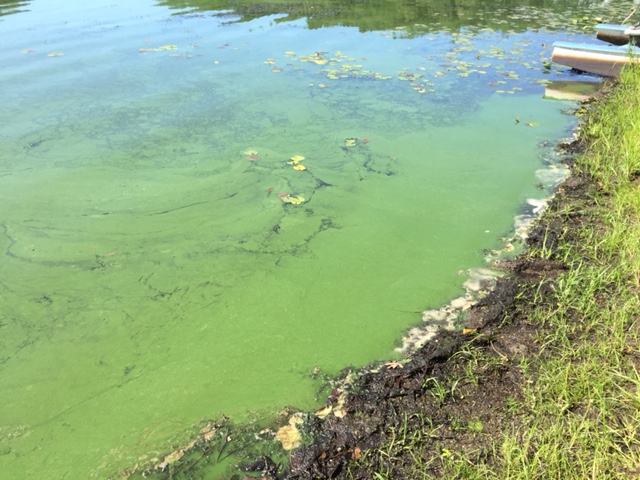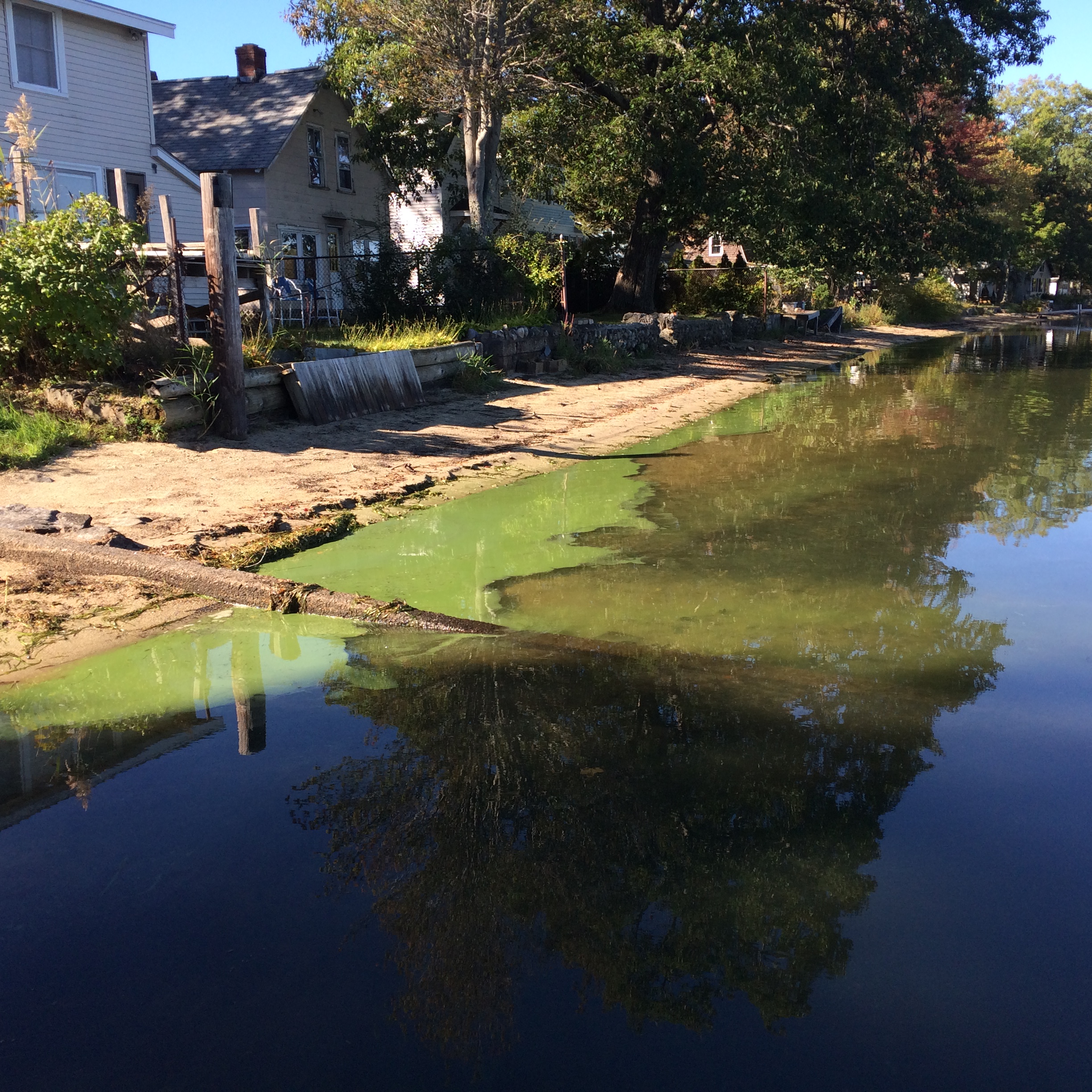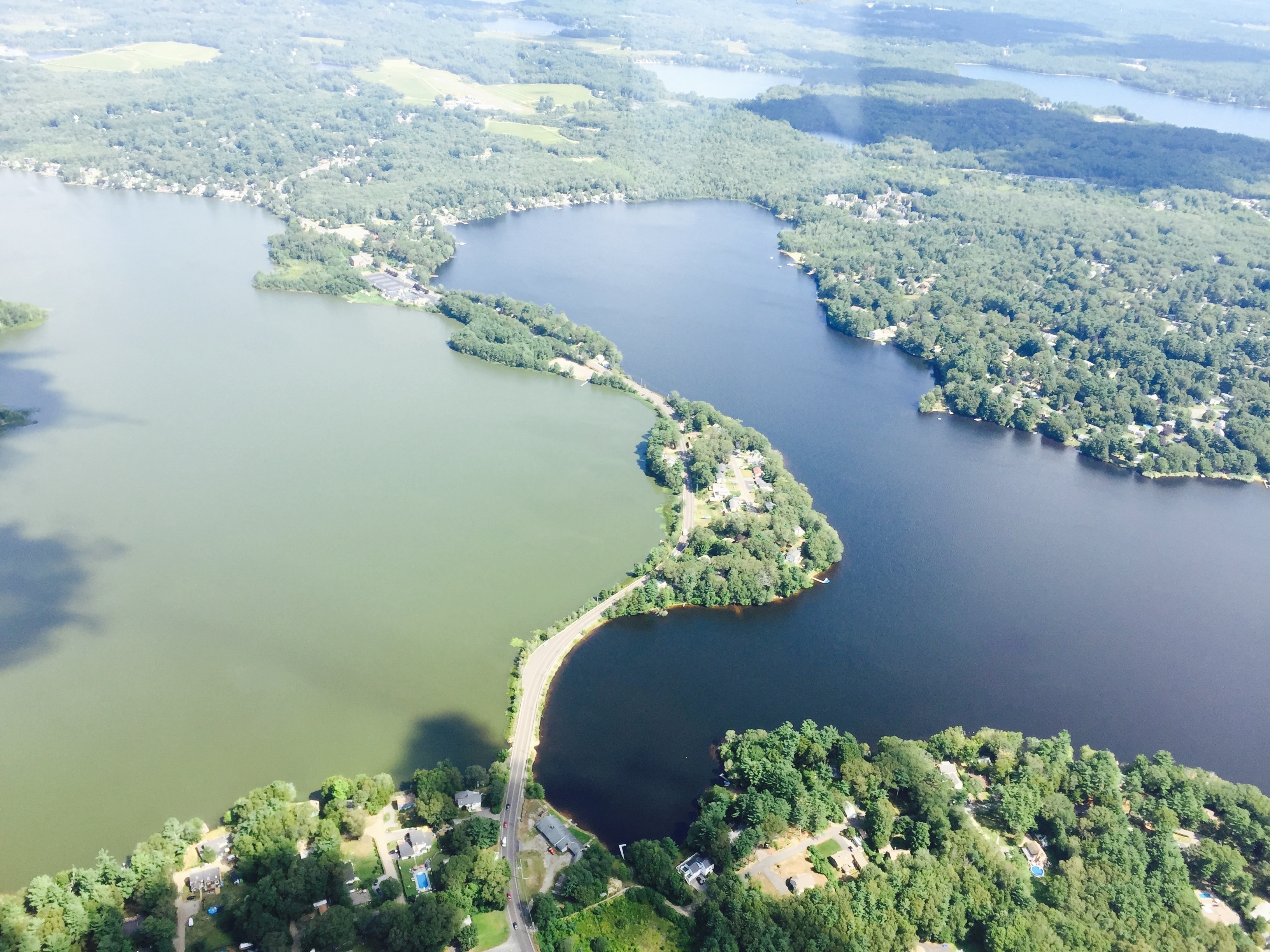Visually Identifying Signs of a Cyanobacterial Bloom
Visual signs of a bloom include:
-
surface water discoloration (e.g., a green, white, brown, red, or blue tint);
-
reduced transparency (e.g., water that looks like pea soup or lets limited light through); and/or
-
thick, mat-like accumulations of scum on the shoreline and surface. Cyanobacteria are also associated with unfavorable taste-and-odor compounds in lakes and reservoirs. The photos of cyanobacterial blooms depict common visual characteristic of blooms.
A cyanobacterial bloom may be present without producing cyanotoxins, and conversely, cyanotoxins can be present both before and after blooms are visible. Therefore, it is recommended that cyanotoxin levels be confirmed through laboratory testing of the water.
Microscopic phytoplankton identification can provide information when blooms are present and not visually apparent.
For more information on phytoplankton identification and image:
-
USGS: Field and Laboratory Guide to Freshwater Cyanobacteria Harmful Algal Blooms for Native American and Alaska Native Communities (pdf) -- Although the title is geared to Tribal communities, information in it is useful to any recreational water manager looking to identify cyanobacteria.

Sudbury River, MA (Photo by Susan Flint)

Attitash, MA (Photo by Nancy Leland)

Monponsett Pond, MA
(Photo by Edward Broderick)
